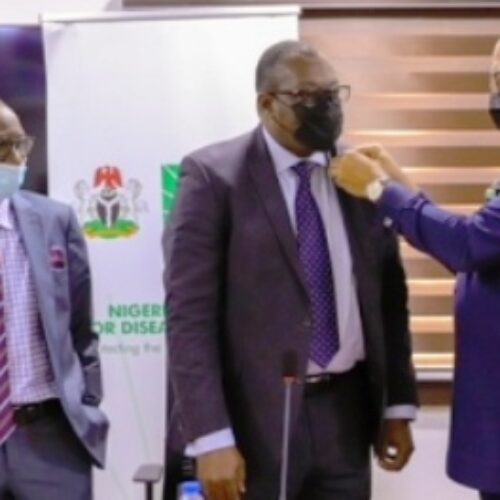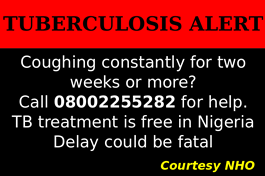WHO calls for urgent action to end TB
Fewer people fell ill and died from tuberculosis (TB) last year but countries are still not doing enough to end TB by 2030, warns the World Health Organization (WHO). Although global efforts have averted an estimated 54 million TB deaths since 2000, TB remains the world’s deadliest infectious disease.
WHO’s 2018 Global TB Report, released early this week, calls for an unprecedented mobilization of national and international commitments. It urges political leaders gathering next week for the first-ever United Nations High-level Meeting on TB to take decisive action, building on recent moves by the leaders of India, the Russian Federation, Rwanda, and South Africa. Nearly 50 Heads of State and Government are expected to attend the meeting.
“We have never seen such high-level political attention and understanding of what the world needs to do to end TB and drug-resistant TB, said Dr.Tedros Adhanom Ghebreyesus, WHO Director-General. “We must capitalize on this new momentum and act together to end this terrible disease.”
To meet the global target of ending TB by 2030, countries need to urgently accelerate their response – including by increasing domestic and international funding to fight the disease. The WHO report provides an overview of status of the epidemic and the challenges and opportunities countries face in responding to it.
Status of the TB epidemic
Overall, TB deaths have decreased over the past year. In 2017, there were 1.6 million deaths (including among 300 000 HIV-positive people). Since 2000, a 44% reduction in TB deaths occurred among people with HIV compared with a 29% decrease among HIV-negative people;
Globally, an estimated 10 million people developed TB in 2017. The number of new cases is falling by 2% per year, although faster reductions have occurred in Europe (5% per year) and Africa (4% per year) between 2013 and 2017;
Some countries are moving faster than others – as evidenced in Southern Africa, with annual declines (in new cases) of 4% to 8% in countries such as Lesotho, Eswatini, Namibia, South Africa, Zambia, and Zimbabwe, thanks to better TB and HIV prevention and care. In the Russian Federation, high level political commitment and intensified TB efforts have led to more rapid declines in cases (5% per year) and deaths (13% per year)
Drug-resistant TB remains a global public health crisis: In 2017, 558 000 people were estimated to have developed disease resistant to at least rifampicin – the most effective first-line TB drug. The vast majority of these people had multidrug-resistant TB (MDR-TB), that is, combined resistance to rifampicin and isoniazid (another key first-line TB medicine).
WHO estimates that a quarter of the world’s population has TB infection.
Underreporting and under-diagnosis of TB cases remains a major challenge. Of the 10 million people who fell ill with TB in 2017, only 6.4 million were officially recorded by national reporting systems, leaving 3.6 million people undiagnosed, or detected but not reported. Ten countries accounted for 80% of this gap, with India, Indonesia and Nigeria topping the list.
Less than half of the estimated one million children with TB were reported in 2017, making it a much higher gap in detection than that in adults.
Treatment coverage lags behind at 64% and must increase to at least 90% by 2025 to meet the TB targets.
To urgently improve detection, diagnosis and treatment rates, WHO, the Stop TB Partnership and the Global Fund launched the new initiative in 2018, Find. Treat. All. #EndTB, which set the target of providing quality care to 40 million people with TB from 2018 to 2022.
Only around half of the estimated 920,000 people with HIV-associated TB were reported in 2017.Of these, 84% were on antiretroviral therapy. Most of the gaps in detection and treatment were in the WHO African Region, where the burden of HIV-associated TB is highest.
Only one in four people with MDR-TB were reported to have received treatment with a second-line regimen. China and India alone were home to 40% of patients requiring treatment for MDR-TB, but not reported to be receiving it. Globally, MDR-TB treatment success remains low at 55%, often due to drug toxicity making it impossible for patients to stay on treatment.
A month ago, WHO issued a Rapid Communication on key changes to treatment of drug-resistant TB based on the latest scientific evidence. These changes should result in better treatment outcomes and more lives saved. WHO is already working with countries and partners to roll out these changes.
The Organization predicts that at least 30 million people should be able to access TB preventive treatment between 2018 and 2022, based on new WHO guidance. Although preventive treatment for latent TB infection is expanding, most people needing it are not yet accessing care.
WHO strongly recommends preventive treatment for people living with HIV, and children under 5 years living in households with TB. Related new guidance was issued by WHO in 2018, to facilitate greater access to preventive services for those who need it.






0 Comments
No Comments Yet!
You can be first to comment this post!